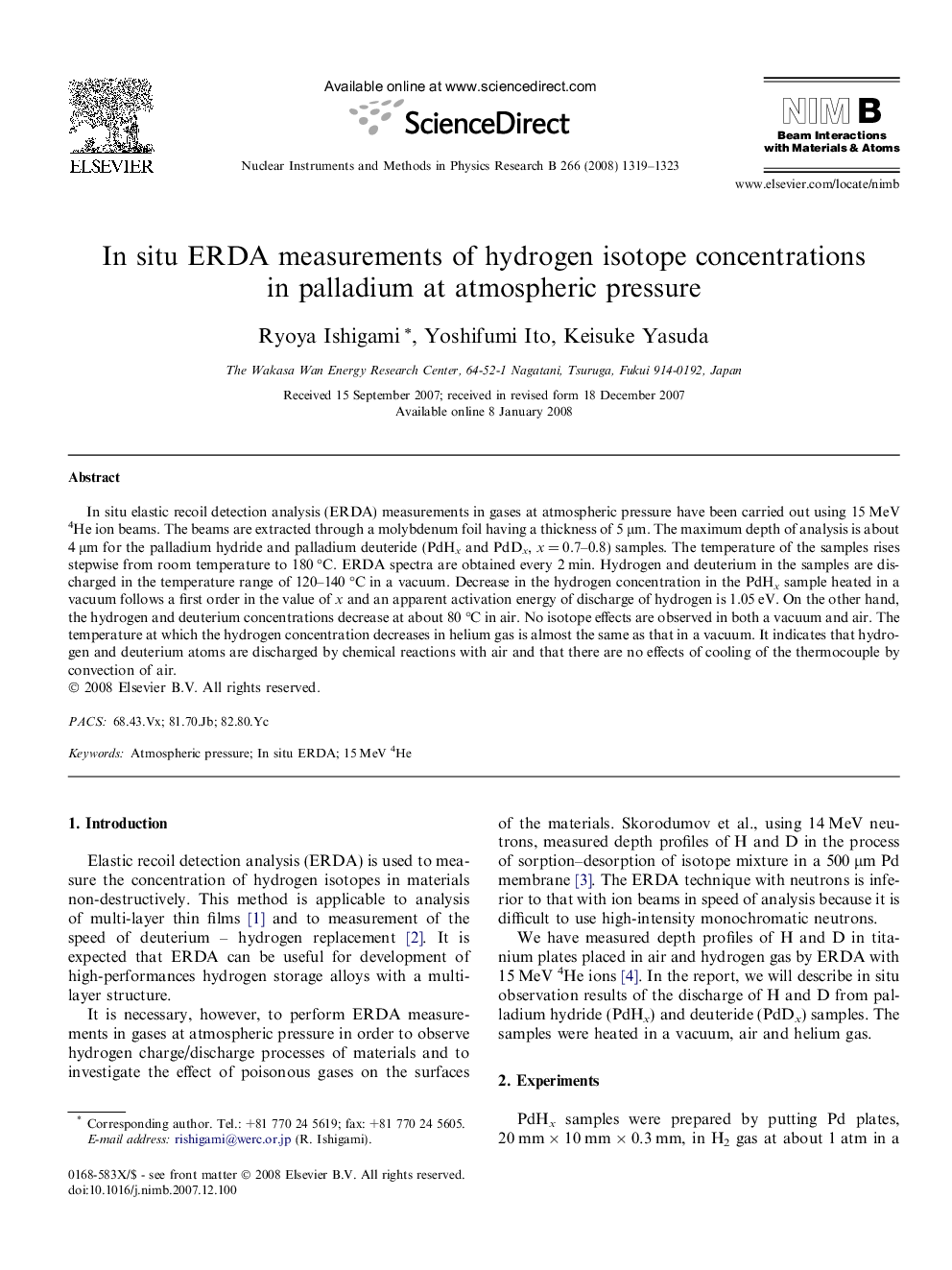| کد مقاله | کد نشریه | سال انتشار | مقاله انگلیسی | نسخه تمام متن |
|---|---|---|---|---|
| 1685157 | 1010548 | 2008 | 5 صفحه PDF | دانلود رایگان |

In situ elastic recoil detection analysis (ERDA) measurements in gases at atmospheric pressure have been carried out using 15 MeV 4He ion beams. The beams are extracted through a molybdenum foil having a thickness of 5 μm. The maximum depth of analysis is about 4 μm for the palladium hydride and palladium deuteride (PdHx and PdDx, x = 0.7–0.8) samples. The temperature of the samples rises stepwise from room temperature to 180 °C. ERDA spectra are obtained every 2 min. Hydrogen and deuterium in the samples are discharged in the temperature range of 120–140 °C in a vacuum. Decrease in the hydrogen concentration in the PdHx sample heated in a vacuum follows a first order in the value of x and an apparent activation energy of discharge of hydrogen is 1.05 eV. On the other hand, the hydrogen and deuterium concentrations decrease at about 80 °C in air. No isotope effects are observed in both a vacuum and air. The temperature at which the hydrogen concentration decreases in helium gas is almost the same as that in a vacuum. It indicates that hydrogen and deuterium atoms are discharged by chemical reactions with air and that there are no effects of cooling of the thermocouple by convection of air.
Journal: Nuclear Instruments and Methods in Physics Research Section B: Beam Interactions with Materials and Atoms - Volume 266, Issue 8, April 2008, Pages 1319–1323